Our online shop is temporarily closed as we make an exciting transition—bringing authentic Italian treasures directly to you in the United States.
Build Your Hospitality Brand
order cucina a casa
cooking classes
supper club
private celebrations
the shop
How to Make Italian Pasta from Scratch
August 2, 2025
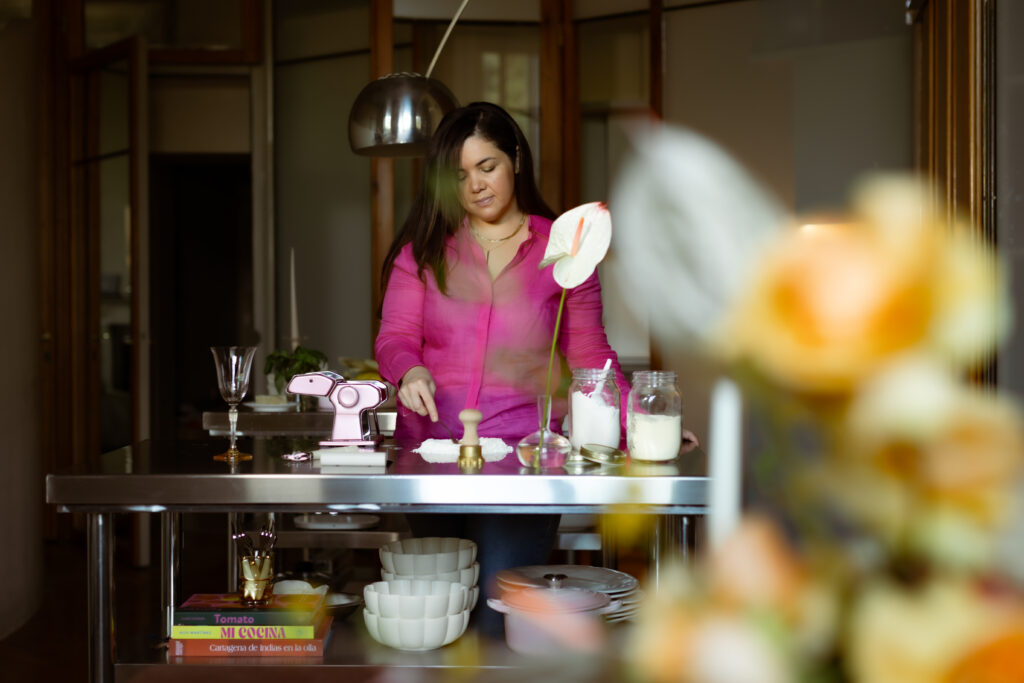
Italian pasta is one of the most desired dishes in the world. No person has not tried this heavenly food. However, pasta tastes the most sublime when it is fresh. So, many home cooks want to figure out how to make Italian pasta from scratch to enjoy the exquisite flavors without going to a fancy restaurant.
But making fresh homemade pasta might seem challenging or really time-consuming, right? Many people feel the same way when it comes to making pasta from scratch. However, it all comes down to the dough. If you can get that texture just right – soft and smooth, without being dry or crumbly – the rest is a breeze! Once you get the hang of it, you will be passionate about making your own pasta because those in stores won’t ever taste as good!
In this blog, I will discuss the preparation along with the steps for making Italian pasta. After reading, you will see that you just need the right ingredients and guidelines to make this glorious dish.
Ingredients for Making Fresh Homemade Italian Pasta
Before even beginning to make pasta, you need to ensure that you have the right ingredients. The secret behind the sublime taste of most Italian dishes is in the ingredients you use. That is why I always ensure I have the right ones in my kitchen to get the refined taste and flavors we crave.
So, when learning how to make Italian pasta, you first need to obtain some fresh eggs, semolina, and Italian 00 flour. You can also go with all-purpose flour, but I highly recommend choosing Italian if possible. That way, you will get the exact taste of pasta you expect to achieve when making it from scratch.
This finely milled, soft wheat flour from Italy is ideal for crafting light and delicate pasta. When I compare the texture, I would say it resembles baby powder. Regarding my flour preferences, my favorite one to use is Molino Pasini.
Let us now move on to the eggs. I would recommend choosing large eggs and yolks. Generally, larger eggs introduce moisture, color, and richness to the dough. I am highlighting the size because it is crucial. I typically utilize large eggs weighing approximately 55–58 grams each.
Lastly, you will need a manual pasta machine. This traditional tool allows for the rolling and cutting of dough by hand. It is actually what helps you get the magical texture of pasta.
How to Make Italian Pasta in a Few Simple Steps
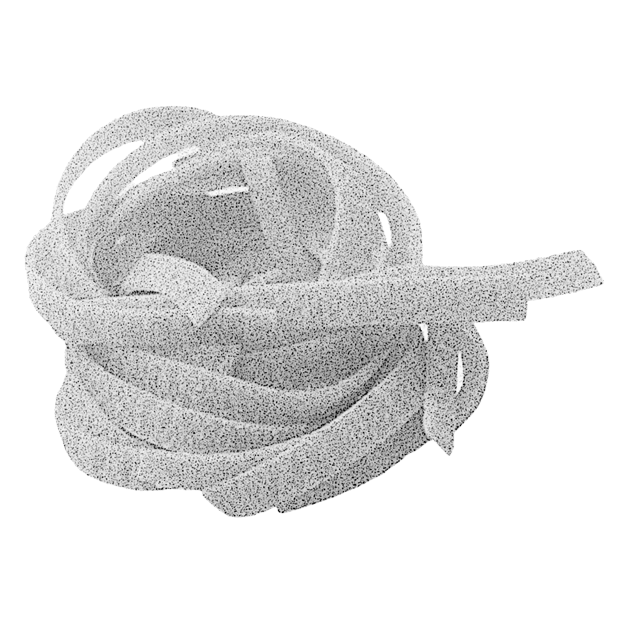
Preparing and Making The Pasta Dough
To prepare the recipe for five portions, you will need the following ingredients: 400 grams of 00 flour and 100 grams of semolina, which corresponds to 5 eggs. This means that for each person, you should use 80 grams of 00 flour and 20 grams of semolina.
Begin by placing the flour on a wooden board and using your fingertips or a bowl, form a well in the center to accommodate your eggs. Crack one egg into a separate bowl to ensure its quality, then transfer it to the well in the flour.
You will need to repeat this procedure until all five eggs have been added. Next, you will need to gently break the yolks with a fork and begin to whisk the eggs in the center, taking care not to disturb the surrounding flour.
Gradually incorporate the flour into the egg mixture, a little at a time. Once fully integrated, continue using a fork or scraper to blend until the mixture has absorbed all the moisture and is sufficiently dry to be handled and shaped into a ball.
Once you are finished making the dough, lightly dust your work surface with semolina, place the dough atop it, and begin kneading by pressing the dough away from you with the heel of your palm. Then, with the opposite hand, fold the dough in half and turn it 180 degrees counterclockwise.
Repeat this process until the dough achieves a smooth consistency, free from cracks or wet spots. This should take about 10 minutes. You will notice that the dough is ready for resting when it springs back to your touch.
When that happens, cover the dough with a bowl or plastic wrap to protect it from air exposure. Allow it to rest for a minimum of 30 minutes – this resting period permits the gluten to relax and the flour to absorb moisture, making it easier to roll and shape. The longer you allow it to rest, the more elastic the dough will become.
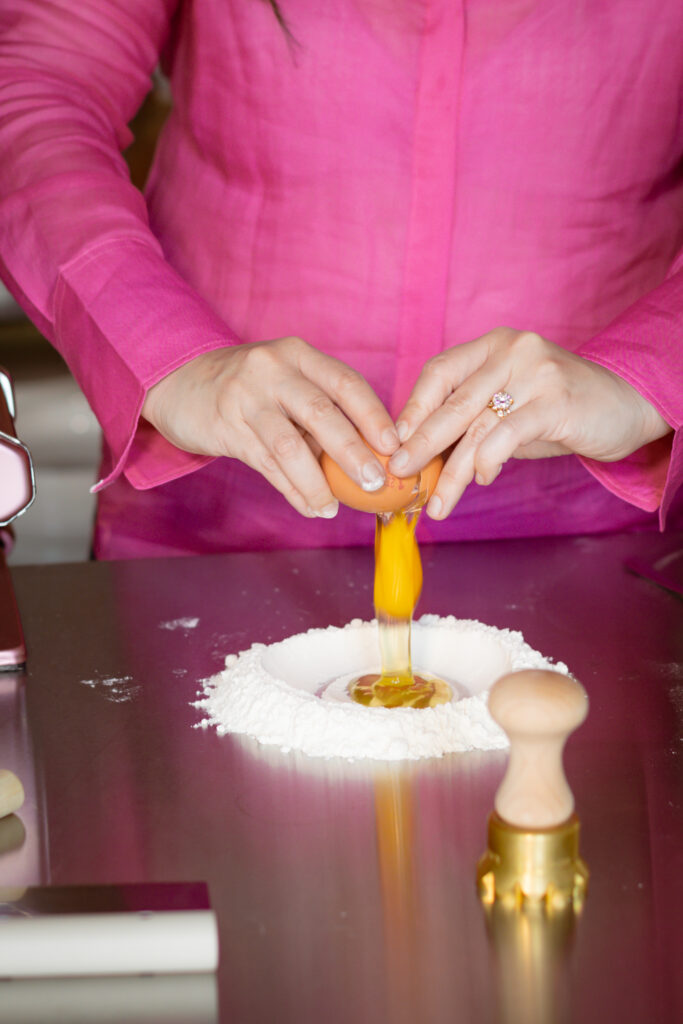
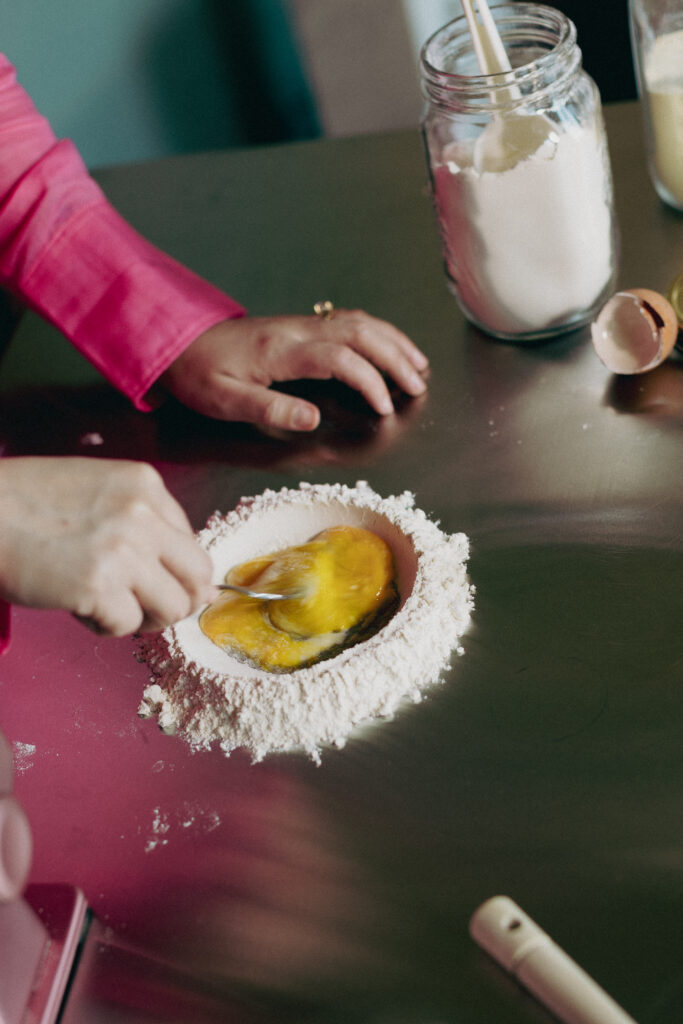
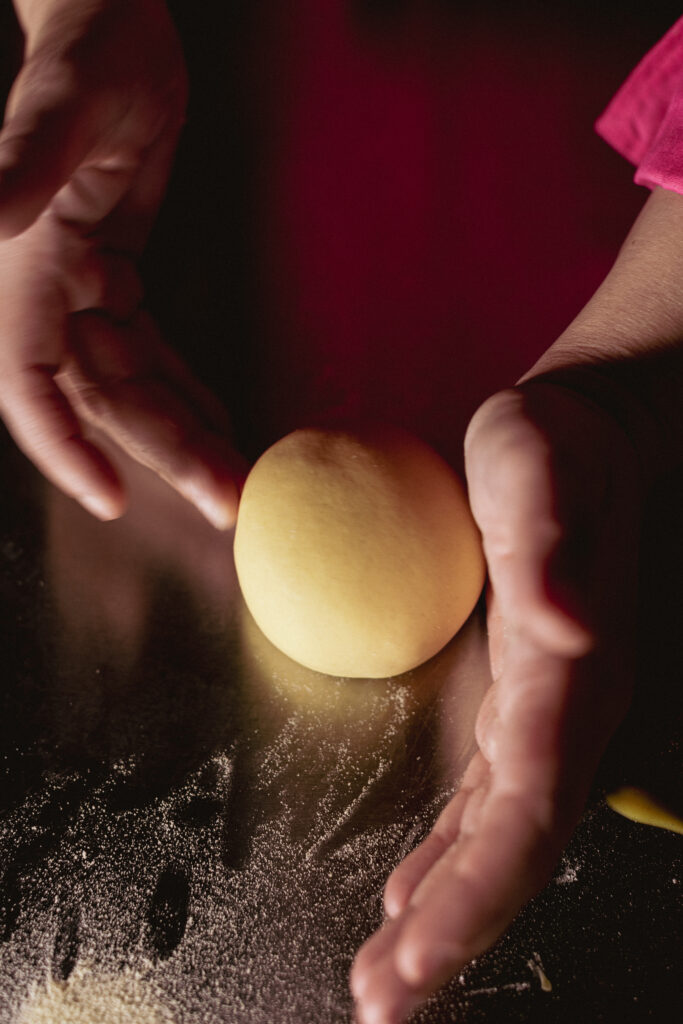
Rolling Fresh Pasta Sheets
Divide the dough into two equal portions and gently flatten them using a rolling pin. While achieving an excessively thin consistency before passing the dough through the pasta machine is unnecessary, ensuring a uniform thickness will make things easier.
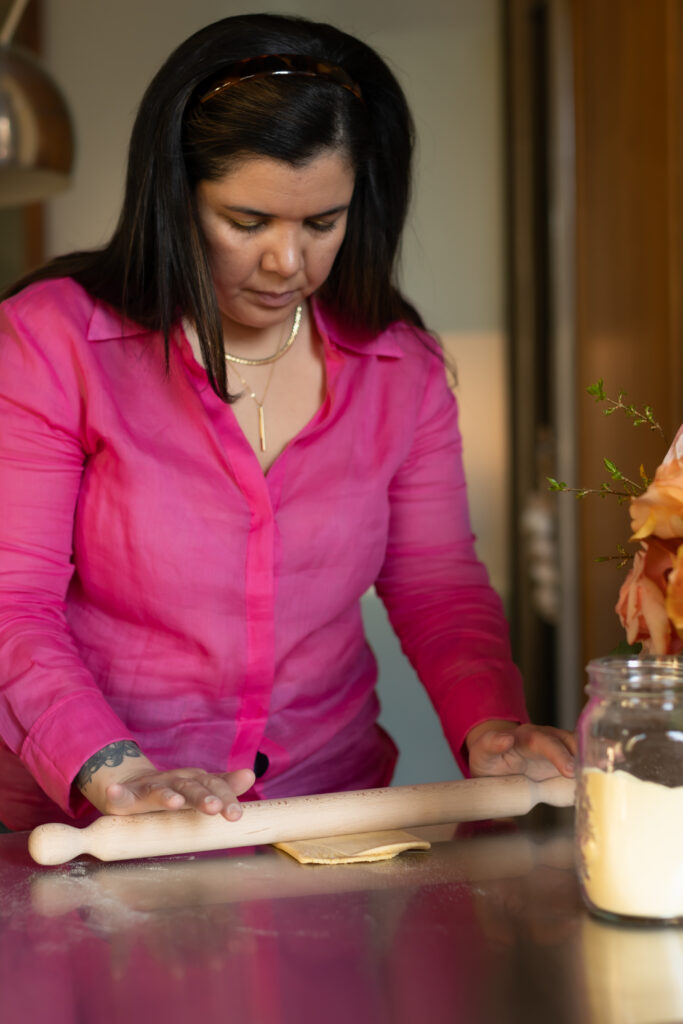
The idea is just to make it as thin and even as possible to pass through the machine’s widest setting to ensure that it rolls smoothly and straight.
Continue this process, passing the dough through increasingly thinner settings until it becomes translucent enough to see your fingers through it.
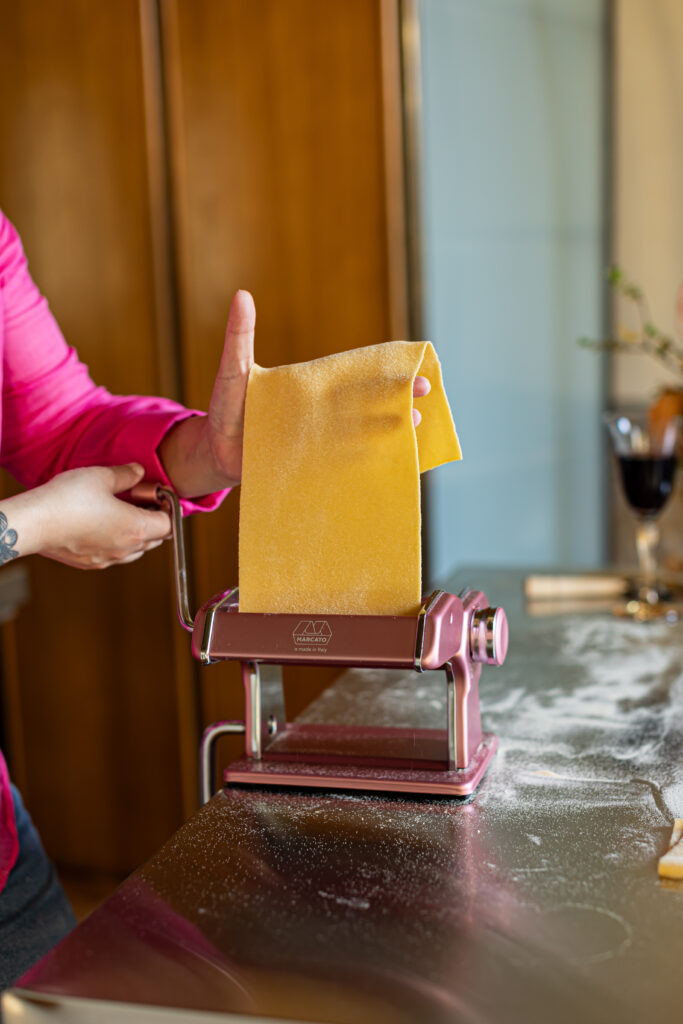
Use a Pasta Machine
Begin by adjusting the pasta machine to the widest setting and passing the dough through it. Once it emerges from the other side, place the dough on your work surface. Fold the left and right edges towards the center and run it through the machine again at the widest setting. Next, repeat this process in the opposite orientation by folding the top and bottom.
At this stage, your dough should take on a rectangular shape rather than an oval. Lightly dust it with semolina or flour, and then run the dough through the machine at the next setting. Continue this process, passing the dough through increasingly thinner settings until it becomes translucent enough to see your fingers through it.
Although each pasta machine may vary slightly, this will typically be around settings 6 or 7. Most pasta machines produce long sheets approximately 6 inches wide.
Ecco fatto!
This is the whole process, as simple and straightforward as possible. When you want to learn how to make Italian pasta from scratch, you need to remember that following careful steps is essential. Moreover, you need to consider the freshness of your ingredients to obtain the delightful taste of pasta we all know. When you take these things into account, you will be ready to have heavenly flavors right in your home. You will see that pasta making is not so complex when you learn all the proper steps!
I would also love to hear about your pasta-making endeavor, so please feel free to share with me your experience. For more cooking advice and recommendations, please visit my blog page.
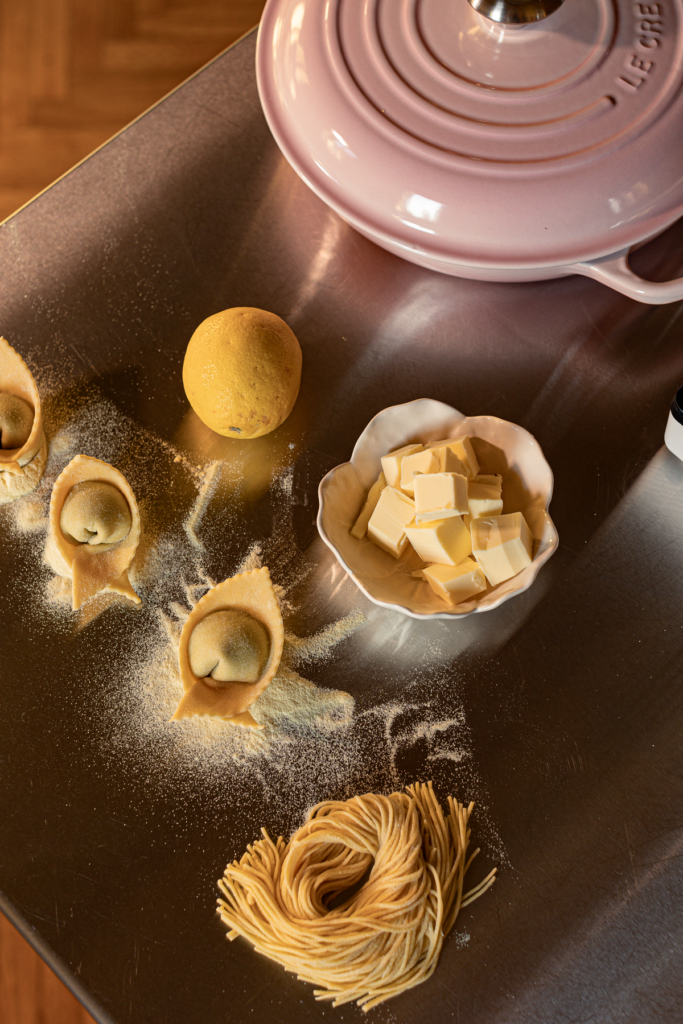
Leave a Reply Cancel reply
designed with ♥ by the hospitality atelier
From our kitchen to your table—authentic Italian traditions, global inspiration, and the very best of Maine.
Reopening Spring 2026
2024 Piccola Cucina. All rights reserved
site policies
fAQ's
reviews
contact
shop
contact
newsletter
inquire about private events
blog